Wild Bill Hickok Rides

Brief Synopsis
Cast & Crew
Ray Enright
Constance Bennett
Bruce Cabot
Warren William
Betty Brewer
Walter Catlett
Film Details
Technical Specs

Synopsis
After the 1871 Chicago fire, gambler Belle Andrews agrees to join crooked promoter Harry Farrel and move to Powder River, Wyoming, to set up a new business. Farrel plans to take advantage of a new law to oust ranchers from their land and use the stolen land to raise cattle, which he will then sell to the Chicago stockyards. When the train on which they travel is held up by outlaws, the travelers are rescued by another passenger, gunfighter Wild Bill Hickok, who is traveling to Powder River to visit Ned Nolan, owner of the largest ranch in the area, and his adopted daughter Janey. When they arrive in Powder River, Farrel asks Belle to use her charm to distract Hickok while he and his men take over the ranches. Because Nolan owns the water rights for the entire valley, Farrel offers to pay off his mortgage in exchange for the ranch, but Nolan refuses to sell for any price. Farrel then frames Nolan for a murder. When Hickok tries to break him out of jail, Nolan stops him, convinced that the jury will acquit him. Hickok then goes in search of the only witness who can prove Nolan's innocence. While he is gone, Nolan is found guilty and is lynched by a mob incited by Farrel's men. When he returns to town, Hickok goes after the men responsible for Nolan's death and is wounded in the ensuing gunfight. Farrel tries to finish Hickok off, but is prevented from killing him by Belle, who has fallen in love with the gunfighter. Later, the honest people in town decide to ask Hickok to clean up Powder Valley and as his first act, Hickok organizes the homesteaders. Because the other ranch land in the valley is useless without the water on the Nolan ranch, Hickok advises the homesteaders to pool their cattle at the ranch, where the animals will be sold to pay off the mortgage. When Farrel realizes what Hickok is planning, he and his men decide to blow up the local dam and flood the valley, thereby killing all the cattle. Belle warns Hickok, who orders the homesteaders to drive the cattle to higher ground and then rides to the dam to stop Farrel. Farrel sets off the explosives before Hickok can stop him, but during the ensuing shootout, Hickok kills Farrel. Thanks to Belle's warning, most of the cattle are saved. At Belle's suggestion, Janey is sent to school in Chicago, while Belle remains behind with Hickok.

Director
Ray Enright
Cast

Constance Bennett
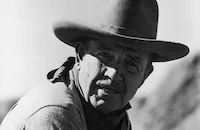
Bruce Cabot

Warren William
Betty Brewer

Walter Catlett

Ward Bond
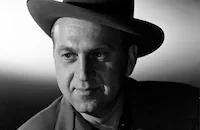
Howard Da Silva
Frank Wilcox
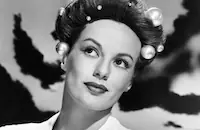
Faye Emerson

Lucia Carroll

Julie Bishop
Russell Simpson

J. Farrell Macdonald
Lillian Yarbo
Cliff Clark
Trevor Bardette
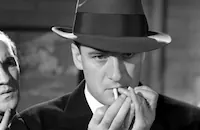
Elliott Sullivan
Dick Botiller

Ray Teal
Frank Mayo

Joseph Crehan
Pat Mcveigh
Cliff Saum

Hobart Bosworth
Dorothy Vaughan
Ferris Taylor
Frank M. Thomas
Arthur Loft
Robert Strange
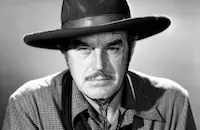
Harry Woods
Lew Harvey
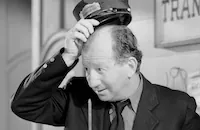
Hank Mann
Forrest Taylor
Chief Thundercloud
Bud Osborne

Harry Cording
Fred Kelsey
Georgia Caine

Jack Mower
Eddy Waller
Albert Russell
Charles K. French
Stuart Holmes
Sammy Mckim
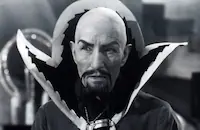
Charles Middleton
Davison Clark
Francis Sayles
Sarah Padden
Frank Pharr
Victor Zimmerman
Mary Thomas
Jane Jones
Bud Jamison
Jack Lipson
John Maxwell

Howard Mitchell
Robert Homans
Francis Mcdonald
Paul Burns
Walter Soderling
William Gould
Alan Bridge
Karl Hackett
Herbert Heywood
Crew
Stanley Fleischer
Bryan Foy
Edmund Grainger
Charles Grayson
Byron Haskin
Howard Jackson
M. K. Jerome
Matty King
Clarence Kolster
Gene Lewis
Lincoln Lyons
Ted Mccord
Orry-kelly
Jack Scholl
Raymond Schrock
Paul Gerard Smith
Jack Sullivan
Willard Van Enger
Perc Westmore

Film Details
Technical Specs

Quotes
Trivia
Notes
The film begins with the following written foreword: "In the period following the Civil War, the West knew no law except the survival of the fittest, and it took men like Wild Bill Hickok to stand up against the cattle barons and the land pirates who fought to exploit the resources of the ever expanding country." Wild Bill Hickok's (1837-1876) well-deserved reputation as a gunfighter was established in an interview with Colonel George Ward Nichols published in Harper's New Monthly Magazine in 1867. Hickok was a good shot and probably killed at least seven men. He was a scout in the Union army during the Civil War and after the war, he became a marshal in Hays City, KS and then in Abilene, KS. He appeared in a play with Buffalo Bill Cody in 1873, and in 1876, Hickok was shot in the back by Jack McCall during a poker game in Deadwood, Dakota Territory. Bruce Cabot was borrowed from Walter Wanger's company for the film and Betty Brewer was borrowed from Paramount. According to an undated contemporary press release in the file on the film at the AMPAS Library, Brewer's character, "Janey Nolan," was supposed to be Calamity Jane as a child, but there is no reference to this in the film.













